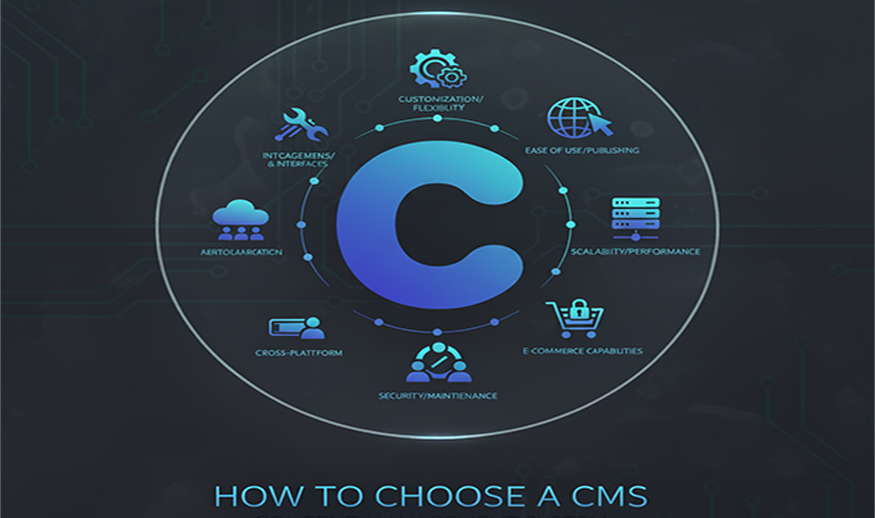
How to Choose a CMS (Content Management System)
To choose the right Content Management System (CMS), you need to carefully evaluate your project's goals, your team's technical skills, and your long-term scalability needs. The ideal choice depends on your specific use case, ranging from simple blogs to complex enterprise applications and e-commerce stores.
Considerations for choosing a CMS
1. Define your core needs
- Website purpose: Determine the primary goal of your site. Is it a simple blog, a complex e-commerce platform, a large content portal, or a specialized application?
- Content type and volume: Consider the kind of content you will manage (e.g., text, images, video) and how often it will be updated. Some platforms are better suited for large, complex content inventories than others.
- Functionality: Make a list of required features like user management, multi-language support, forms, or analytics integration. Avoid being swayed by "nice-to-have" features you will not use.
2. Evaluate user experience and technical skills
- Ease of use: Assess who will be managing the content. If your team is non-technical, a user-friendly CMS with a WYSIWYG (What You See Is What You Get) editor is crucial. If you have developers on your team, a more flexible, technical platform might be preferred.
- Customization: Some CMSs offer simple drag-and-drop customization, while others provide extensive control over code for a completely custom design. Consider how much control you need over the look and feel of your site.
- Support and community: Look for platforms with active communities, extensive documentation, or dedicated technical support. This can be invaluable for troubleshooting and resolving issues.
3. Assess architecture: Traditional vs. Headless CMS
-
Traditional (Coupled) CMS: This all-in-one approach combines the front-end (what users see) and the back-end (content management).
- Best for: Standard websites, blogs, or simple content sites where content is delivered to a single channel. Examples include WordPress and Squarespace.
- Pros: Easy to use for non-technical users and quick to set up.
- Cons: Less flexible for omnichannel delivery and can be difficult to scale for complex projects.
- Headless (Decoupled) CMS: The back-end content repository is separated from the front-end presentation layer, delivering content via an API.
- Best for: Omnichannel delivery, complex digital experiences, and future-proofing. Examples include Contentful and Strapi.
- Pros: Highly scalable and offers maximum flexibility for developers.
- Cons: Requires more technical knowledge to set up and maintain.
4. Consider hosting and licensing
- Open-source vs. Proprietary: Decide between a free, open-source CMS (like WordPress or Drupal) with community support and a paid, proprietary one (like HubSpot or Adobe Experience Manager) with built-in features and dedicated vendor support.
- Hosting: Evaluate different hosting options, including self-hosted, cloud-hosted, or SaaS (Software as a Service) platforms like Wix, Shopify, and Squarespace. SaaS platforms offer an all-inclusive solution, while self-hosting provides more control.
- Cost: Look beyond initial license fees. Factor in ongoing costs for hosting, maintenance, security, and premium extensions or themes.
5. Plan for scalability and integration
- Scalability: Choose a CMS that can handle increased traffic and content as your business grows without impacting performance.
- Integration: Ensure the CMS can seamlessly integrate with your existing tech stack, such as Customer Relationship Management (CRM) tools, marketing automation platforms, and analytics software.
